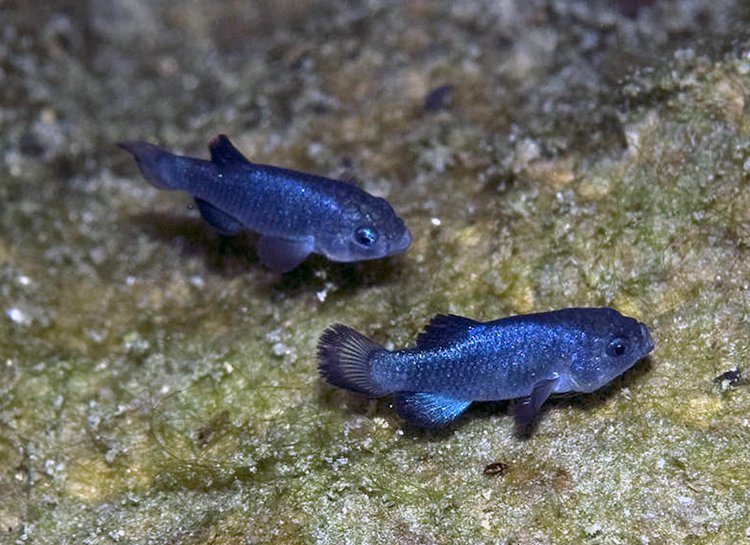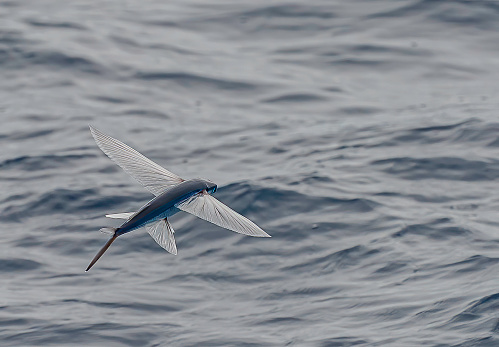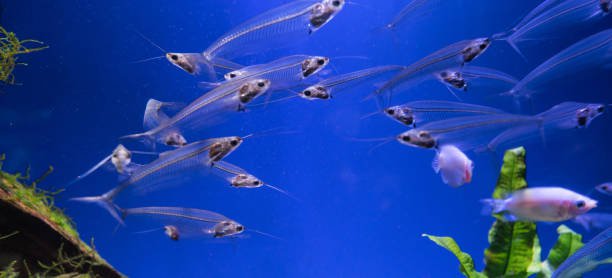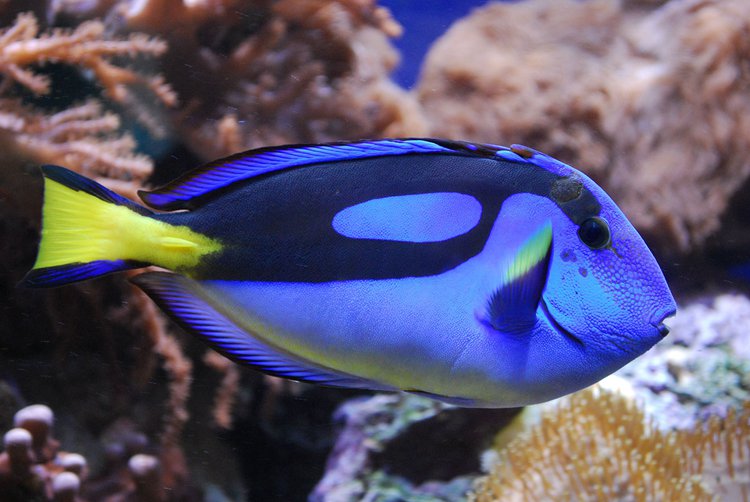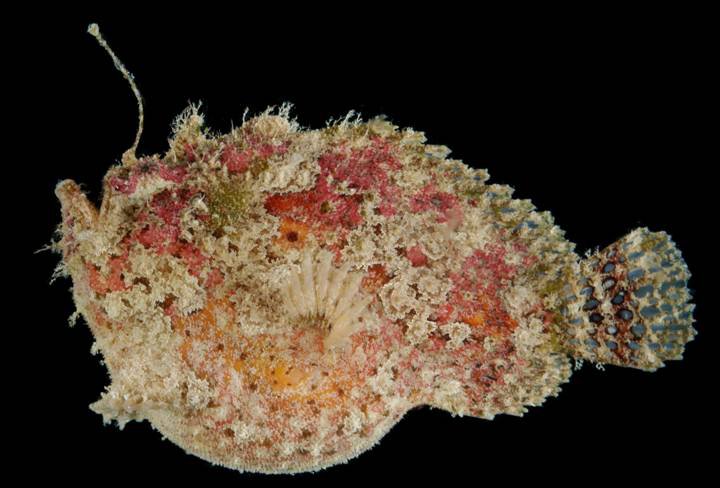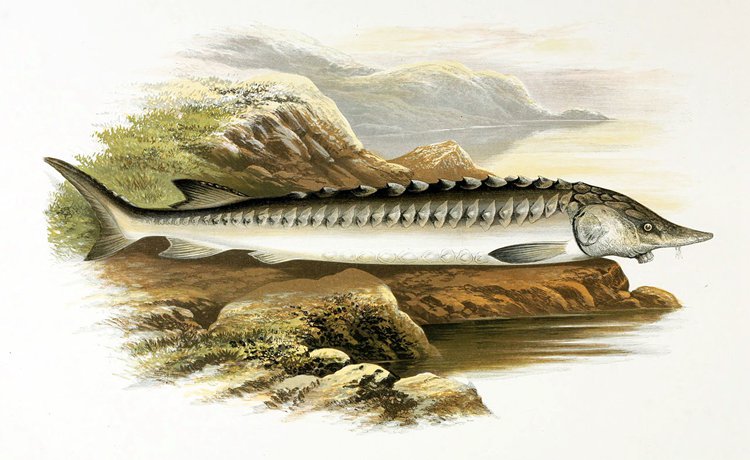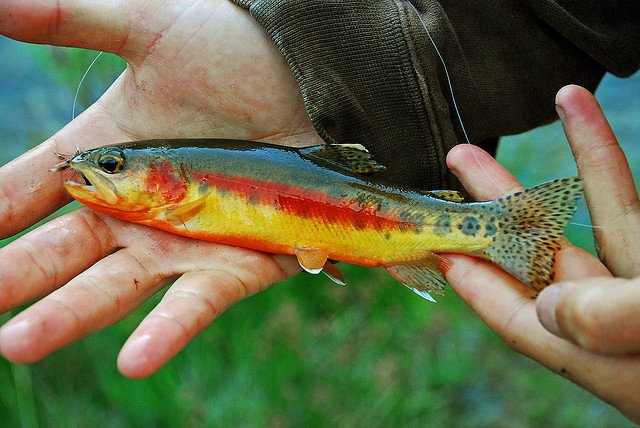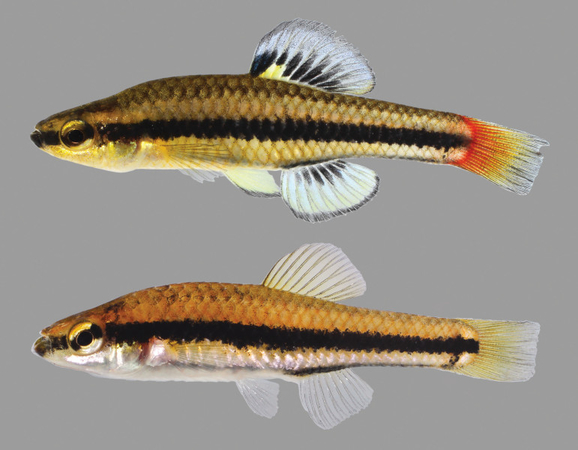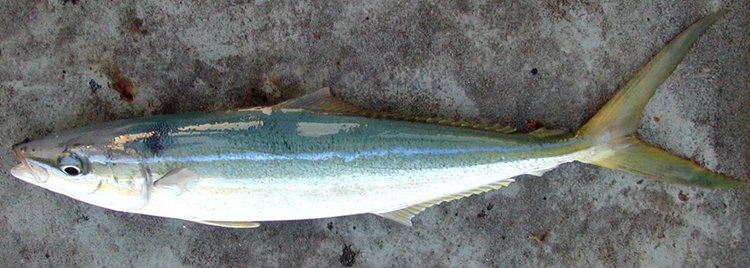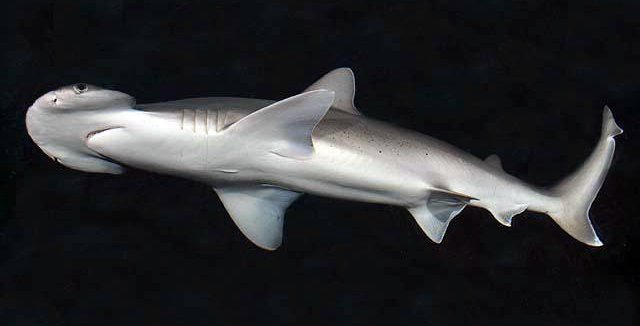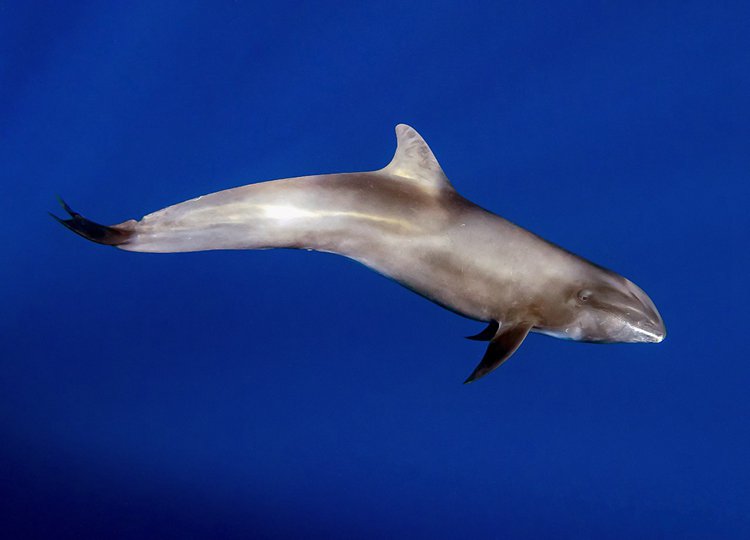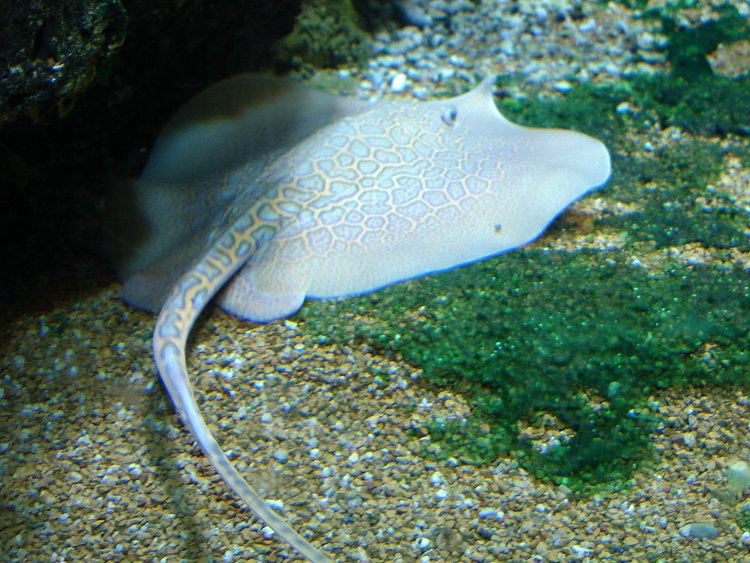There are more than 25,000 known fish species in the world — and that’s just what we know about. New species are being discovered, especially in remote locations or deep underwater.
There are some that you probably never even heard of, let alone knew existed; they’re so rare that most people will never see one in their lifetime. If you’re a keen fisherman, you probably already know about some of these rarities.
But if not, here are some of the world’s rarest fish — and where you can find them — along with some information on why they’re so uncommon.
Table of Contents
Devil’s Hole Pupfish
Location: Central Ash Meadows, Death Valley National Monument, Nye County, Nevada
Size: 3.4 cm
Scientific Name: Cyprinodon diabolis
The Devil’s Hole pupfish is one of the rarest fish in the world because there are so few of them left. In fact, it’s estimated that there are only around 35 individuals left in the wild. This tiny fish is found in just one place on Earth — Devil’s Hole, a small water-filled cavern in the Nevada desert.
The devil’s hole pupfish has been isolated from other devils hole pupfish populations for so long that it’s now considered a separate species. It’s also thought to be the oldest surviving fish species in North America, as it’s believed to have been isolated in Devil’s Hole for around 10,000 years.
Chinese Giant Salamander
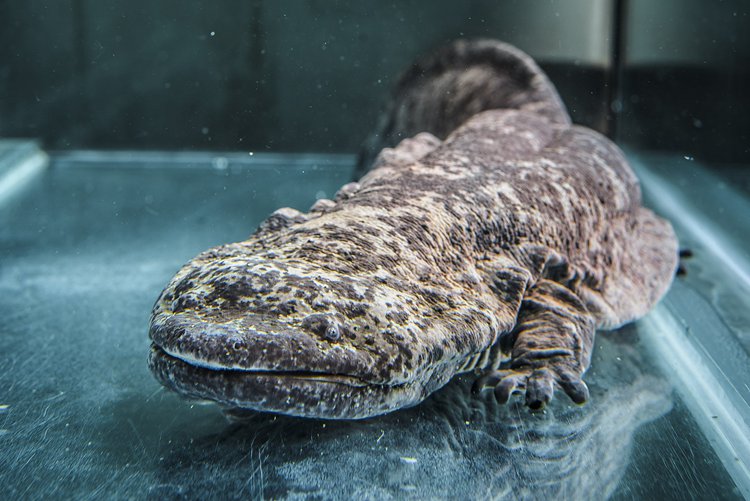
Location: Rivers and lakes in China
Size: 1.8 meters
Scientific Name: Andrias davidianus
The Chinese giant salamander is the largest amphibian in the world, reaching lengths of up to two meters. It’s also one of the rarest, as it’s estimated that there are less than 10,000 left in the wild.
This massive creature is found in rivers and lakes in China but has declined rapidly due to overhunting and habitat loss. It’s now listed as critically endangered, and efforts are being made to protect what’s left of the wild population.
Giant Sea Bass
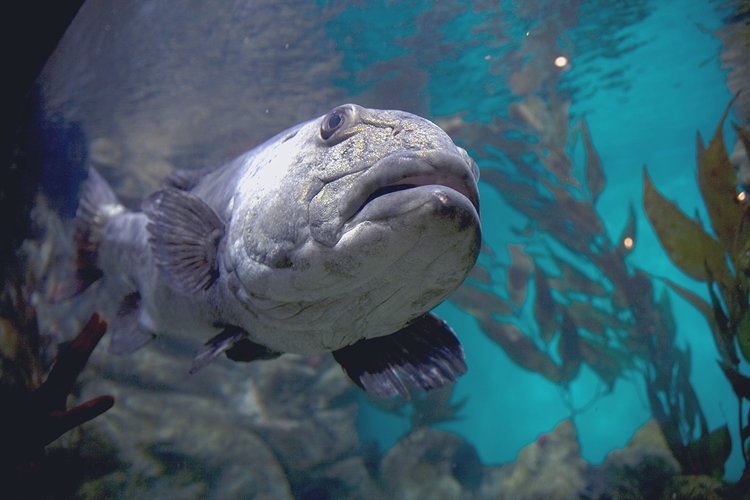
Location: Channel Islands or in the northern portion of the Gulf of California
Size: 2.26 meters
Scientific Name: Stereolepis Gigas
The giant sea bass is one of the largest fish in the world, reaching lengths of up to three meters. But despite its size, it’s very rare and is listed as critically endangered.
This massive fish used to be found in waters all over the world, but overfishing and habitat loss have seen its numbers decline dramatically. Today, there are thought to be less than 10,000 left in the wild and just a few hundred breeding individuals.
There is currently no giant sea bass in captivity, so the only way to see one is to find them in the wild. The best place to do this is off the coast of California, where a small population still hangs on.
Gollum Catfish
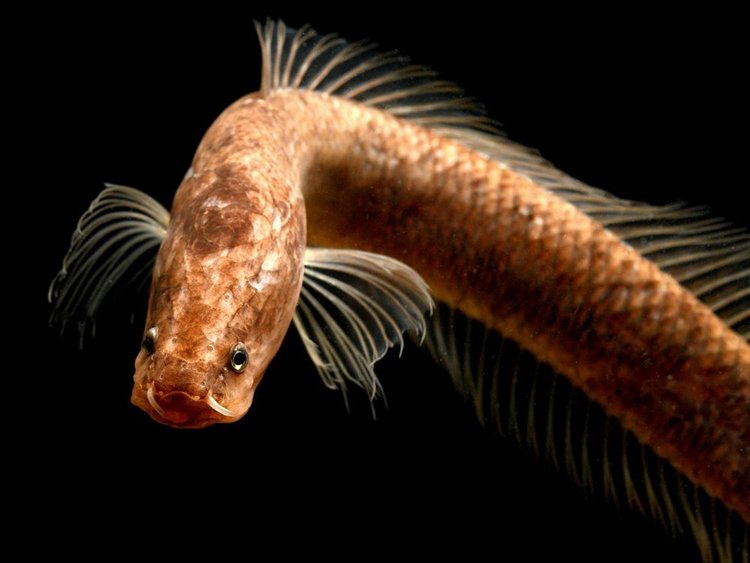
Location: Waters off of California and Baja
Size: 2.26 meters
Scientific Name: Stereolepis Gigas
The Gollum catfish is a rare species of cave-dwelling fish found in only a few caves in Mexico. It’s thought to be the only member of its genus and is named after the fictional character Gollum from The Lord of the Rings due to its similarity in appearance.
These fish are eyeless and have long, slender bodies that help them navigate their dark underwater home. They’re also very rare, as it’s estimated that there are only around 200 individuals left in the wild.
Blue Parrotfish
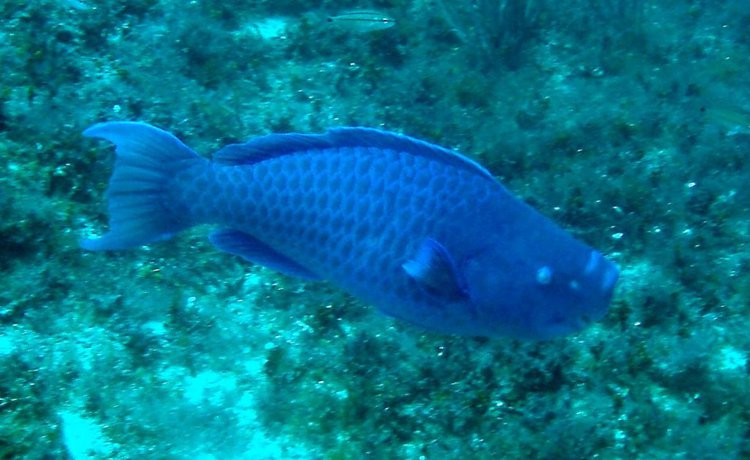
Location: Coral reefs in the Western Atlantic Ocean and the Caribbean Sea
Size: 11 to 29 inches
Scientific Name: Scarus Coeruleus
The blue parrotfish is a brightly-colored fish that’s found on reefs around the world. It gets its name from its beak-like mouth, which it uses to break off pieces of coral to eat.
Despite its wide range, the blue parrotfish is quite rare. This is because it’s heavily hunted in many areas for its meat, which is considered a delicacy. As a result, the blue parrotfish is now listed as endangered in some parts of the world.
Arapaima
Location: Brazil, Peru, and Guyana
Size: 3 meters
Scientific Name: Arapaima gigas
Arapaima is the world’s largest freshwater fish. Native to South America, they can grow up to 10 feet long and weigh up to 500 pounds — making them one of the biggest freshwater fish in the world.
They’re armored fish species, meaning they can have spiky, bony plates covering their bodies. These make them virtually indestructible for most predators, which is one of the reasons they’re so rare. They’re so rare that they’ve been listed as critically endangered since 2011.
They’re found only in the Amazon Basin, usually in fast-flowing rivers or large lakes. Unfortunately, the Amazon — and its myriad fish — is threatened by deforestation and pollution.
If these issues are not addressed, it’s likely that the arapaima will go extinct before the end of this century.
Bowfin
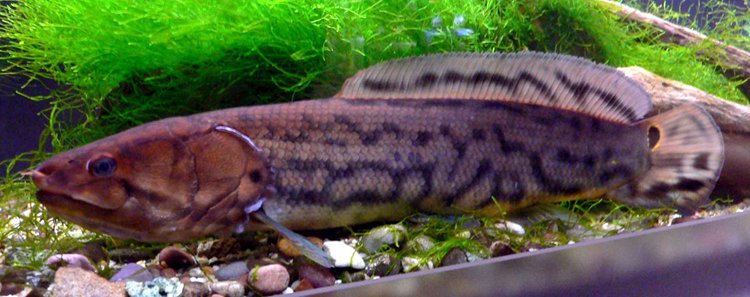
Location: Eastern North America from the Great Lakes and Mississippi River
Size: 20 inches
Scientific Name: Amia calva
Bowfin is a freshwater fish found in lakes and rivers across the eastern United States. Like the arapaima, they’re also listed as critically endangered. They’re very similar in appearance to the arapaima, but they’re much smaller, reaching only around 50 pounds.
Bowfin is one of the oldest fish species on the planet, with fossils dating back to the Cretaceous period. Bowfin is ambush predators, waiting in the weeds for their prey to swim by — which is one of the reasons they’re so rare.
In recent years, bowfin numbers have been declining for several reasons. They’re often killed illegally by anglers who think they’re harming their catch. They’re also struggling to adapt to warmer water temperatures caused by climate change — a problem that’s set to get worse in the coming decades.
Coelacanth
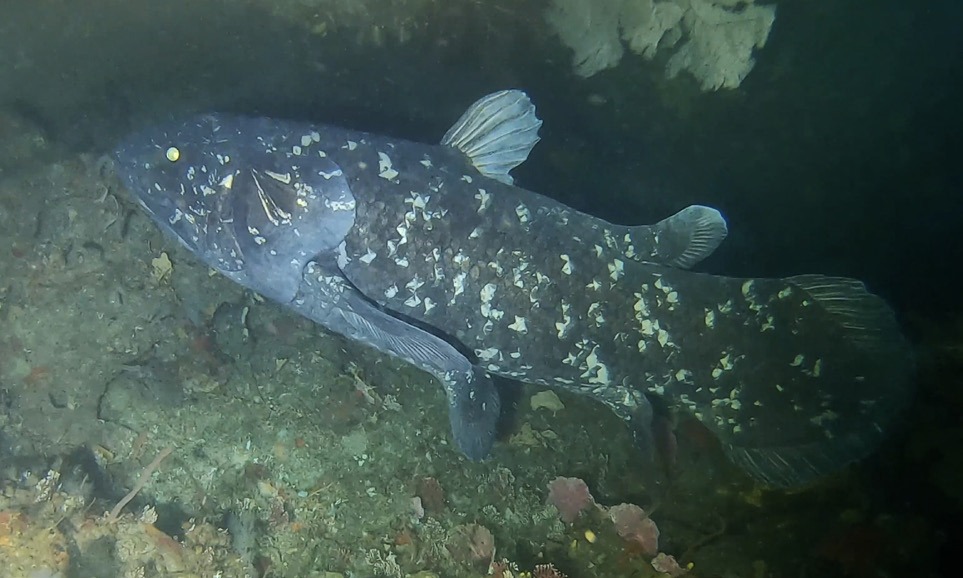
Location: Comoros Islands
Size: 6.5 feet
Scientific Name: Latimeria
The coelacanth is one of the most famous fish globally, but it’s also one of the rarest. It was thought to have gone extinct 65 million years ago, but in 1938, it was discovered alive and well in the Indian Ocean.
They’re listed as critically endangered, with the Indian Ocean population and the Atlantic Ocean population declining rapidly. While their numbers are being monitored, there are currently no known ways to save them from extinction.
The coelacanth is a very old-fashioned fish with minimal genetic variation between populations — making them more susceptible to disease. They’re often caught by mistake as bycatch when fishermen are looking for other species.
The coelacanth is also threatened by climate change, which could cause their natural habitat to become too warm for them.
Flying Fish
Location: Atlantic and Pacific coasts of the United States
Size: 18 inches
Scientific Name: Exocoetidae
Flying fish is a species of fish that can fly, as the name suggests. They have a set of unique fins that allow them to leap out of the water and glide across the air until they hit the water again.
Flying fish is a scarce species found in warm tropical waters — especially in the Caribbean. They’re listed as vulnerable, with climate change and overfishing the biggest threats to their survival.
Flying fish are very susceptible to low oxygen levels in the water, which is exacerbated by rising sea temperatures. They may be forced to migrate away from their current habitats. This could also affect their numbers, as they usually raise their young on tropical beaches.
Humans have eaten flying fish for thousands of years, but their elusiveness has made them a very rare delicacy.
Ghostfish
Location: Mariana Trench in the Pacific Ocean
Size: between 18 and 20 inches
Scientific Name: Apteronotus albifrons
Ghostfish are a rare species of fish that can be found in the waters of the Pacific Ocean around the Hawaiian Islands. They get their name because their bodies are transparent, meaning you can see their internal organs.
Ghostfish are found in the ocean’s deep waters, usually between 500 and 1,000 meters below the surface. They’re sometimes eaten by deepwater sharks and whales, seals, and turtles. Because they live so deep below the surface, humans don’t come into contact with them very often.
They’re listed as critically endangered, with their numbers declining due to overfishing and habitat destruction. Like coelacanth, they have minimal genetic variation between populations, making them more susceptible to disease.
Hagfish
Location: North Atlantic Ocean
Size: 25 inches
Scientific Name: Myxini
Hagfish are a kind of marine eel that lives in the ocean, especially in the Pacific and the Atlantic Ocean — though they can also be found in the Black Sea. They’re a critically endangered species, with their numbers declining.
Hagfish are often caught by mistake when fishermen are looking for other species. They’re also threatened by climate change and rising sea temperatures, which could significantly impact their habitat.
Like coelacanth and ghostfish, hagfish have low genetic variation between their populations. This makes them more susceptible to disease and lowers fertility. Hagfish are unusual in that they’re among the few species of fish capable of cleaning a boat’s hull — meaning they play an essential ecological role.
Hippo Tang
Location: Philippines, Indonesia, Japan, the Great Barrier Reef of Australia, New Caledonia, Samoa, East Africa, and Sri Lanka
Size: 12-inches
Scientific Name: Paracanthurus hepatus
Hippo Tang is a fish species that live in the Atlantic Ocean. It is a bright yellow and has two large fins, hence “hippo.” In 2011, they were listed as vulnerable, and it’s predicted that they will become critically endangered within the next decade.
They get their name from their fins, reminiscent of a hippopotamus’s ears. They’re also similar in appearance to the animal, with a thick and stubby bodies. Like these animals, hippo tang has a reputation for being aggressive.
Hippo tangs are very susceptible to overfishing, with their population decreasing by as much as 20% every year. Climate change also threatens them, with rising sea temperatures expected to reduce their habitat.
Marbled Frogfish
Location: Tropical Pacific, Eastern Atlantic, Eastern Pacific, Hawaii (Kona), Indian Ocean, Japan, Red Sea, Tropical Australia, Western Atlantic, Indonesia, and Asia
Size: 10cm
Scientific Name: Lopiocharon Lithinostomus
Marbled frogfish is a species of fish found in the waters of South East Asia. They’re infrequent, and little is known about their natural habitat or breeding habits. They’re listed as critically endangered, with a population decline of around 10% every year.
Marbled frogfish are especially susceptible to rising sea temperatures and water pollution, which are expected to increase in the coming decades. The marbled frogfish is an unusual-looking fish with a large mouth and vibrant coloration.
They’re rare, but they’re also notoriously difficult to catch. They are sometimes caught by accident by fishermen who are looking for other species.
European Sea Sturgeon
Location: Gironde-Garonne-Dordogne Basin
Size: 6m
Scientific Name: Acipenser sturio
The European sea sturgeon is a species of fish found in the waters of Europe and Asia. It’s listed as critically endangered, with a population decline of around 80% over the last century. The main threats to the European sea sturgeon are overfishing and habitat destruction.
They’re also affected by pollution and climate change. The European sea sturgeon is the largest fish in the sturgeon family. They can grow to be up to 20 feet long and weigh over 1,000 pounds. These fish are prized for their eggs, which are used to make caviar.
Golden Trout
Location: Golden Trout Creek Volcano Creek
Size: 6 to 12 inches
Scientific Name: Oncorhynchus aguabonita
The Golden Trout is a species of fish that’s found in the waters of California. They’re listed as endangered, with their numbers declining for several reasons. The main threat to Golden Trout is habitat loss and degradation. They’re also affected by pollution and climate change.
Golden Trout are unique in that they have a golden hue to their scales. They’re also one of the few species of fish that can live in both freshwater and saltwater. Golden Trout is a popular target for anglers, but they’re also known to be difficult to catch.
Ornate Sleeper Ray
Location: Coast of South Africa
Size: 52 cm
Scientific Name: Electrolux addisoni
The Ornate Sleeper Ray is a species of fish that’s found in the waters of Australia. They’re listed as critically endangered, with their numbers declining for several reasons. The main threat to Ornate Sleeper Rays is habitat loss and degradation.
They’re also affected by climate change. Ornate Sleeper Rays are unique in that they have a bright orange hue to their skin. They’re also one of the few species of fish that can live in both freshwater and saltwater. Ornate Sleeper Rays are a popular target for fishermen, but they’re also known to be challenging to catch.
Bluefin Killifish
Location: Florida
Size: 2.4 in
Scientific Name: Lucania goodei
The bluefin killifish is a type of fish native to the coastal waters of the southeastern United States. This fish is also known as the Atlantic bluefin killifish, Gulf bluefin killifish, and the bluefin mudfish.
This killifish species is considered one of the rarest fish species in North America. There are only a few of these fish found in the wild, mainly in the coastal waters of the southeastern United States.
The biggest threat to the bluefin killifish is habitat loss due to coastal development.
Rainbow runner
Location: Tropical and Warm temperate marine waters worldwide
Size: 42 and 47 in
Scientific Name: Elagatis bipinnulata
The rainbow runner is a type of fish mainly found in the tropical waters of the western Pacific Ocean. It is also known as the blue runner, blue runner jack, canary runner, canary jack, or blue jack. This fish species is considered one of the rarest species in the world.
There are only a few of these fish found in the wild, mainly in the tropical waters of the western Pacific Ocean. The biggest threat to the rainbow runner is habitat loss due to overfishing and pollution.
Bonnethead Shrimpfish
Location: Eastern and Western United States, Central America, the Gulf of Mexico, and the Caribbean
Size: 150 cm
Scientific Name: Sphyrna tiburo
If you’ve seen Finding Nemo, you might have noticed this fish in the tropical fish tank near the film’s beginning. It’s also one of the rarest fish in the world — but for different reasons.
Bonnethead shrimpfish are extremely rare because they are one of the only fish living entirely in salt water, making them very difficult to study. They were only discovered in the 1980s, and since then, they have only been found in a handful of areas — most notably around the Great Barrier Reef in Australia.
This makes them one of the rarest fish in the world. Bonnethead shrimpfish is pinkish-brown in color and have a particular organ on their tails that helps them survive in salt water. They are also one of the largest fish in the sea, growing up to two feet long.
If you’re interested in seeing one, you should plan a trip to Australia soon — their numbers are declining, and they could become extinct within the next 50 years.
Melon-Headed Whale Shark
Location: Hawaii, French Polynesia, and the Philippines
Size: 9.0 ft
Scientific Name: Peponocephala Electra
Melon-headed whale sharks are one of the rarest fish in the world — and one of the largest fish. At up to 15 feet long, they’re one of the biggest fish in the sea. They are also one of the rarest fish, with only around 600 or so left in the wild.
Melon-headed whale sharks have been around for over 100 million years, but they’re now critically endangered. They were discovered in Japanese waters in 1997, and since then, they’ve been seen in a few other places, including the Philippines and Indonesia, which are their primary habitats.
Marbled River Stingray
Location: Saigon in Vietnam, the Mekong River near Tonle Sap and Phnom Penh in Cambodia, the lower Nan and Chao Phraya Rivers in Thailand, and the Mahakam River in Kalimantan, Indonesia.
Size: 3.3m
Scientific Name: Himantura oxyrhyncha
Marbled river stingrays are one of the rarest fish in the world. They spend most of their lives buried in the sand on the sea floor, which is one of the reasons they are so rare. The species was only discovered in 2003, and since then, only about 50 have been seen.
They are primarily found in the waters of northern Australia, but they were also recently discovered in the Philippines. The marbled river stingray is a newly discovered species, so scientists know little about them.
They are still studying them to determine where they live, how often they reproduce, and how many are left in the wild. This is one of the reasons why they are so rare — we don’t know much about them. If you want to see one of these rare fish, you should plan a trip to northern Australia — or the Philippines, if you’re lucky.
Rarest Fish FAQs
Why are some fish so rare?
There are many reasons why some fish are so rare — and some of them are pretty weird. The marbled river stingray, for example, is so rare because it lives in sandy areas, where few people go.
The melon-headed whale shark is occasional because it mostly lives in intense waters, where few people go. And the bonnethead shrimpfish is rare because it lives entirely in salt water, where fewer people go. All of these are perfect environments for rare fish to live in.
What fish are the rarest in the world?
The bonnethead shrimpfish is one of the rarest fish globally, along with the marbled river stingray and the melon-headed whale shark. Although many fish are rare, these are some of the most bizarre world.
Can you eat rare fish?
Yes, you can eat rare fish. While you shouldn’t go out and catch some of the most occasional fish globally, there is plenty of other fish out there to see and eat. Plus, we’re sure that these rare fish would prefer you didn’t miss
So, if you’re keen to eat some rare fish, you could go out and see something less rare, or you could make a trip to the aquarium.
What’s the best way to see a rare fish?
There are a few ways to see rare fish. One is to go diving in areas where they live. Another is to visit aquariums that have them. And another is to go on fishing trips with experts who know where to find them.
Whichever way you choose, make sure you’re prepared — and be respectful of the fish and their habitats.
Are there any fish that are not yet extinct?
Yes, there is plenty of fish that are not yet extinct. Although some species are critically endangered, many others are doing just fine. So, if you’re worried about rare fish becoming extinct, there’s no need to worry — there are plenty of other fish in the sea.
Conclusion
There are many different fish species globally, and some of them are extremely rare. These fish may be rare because they are found in remote locations or have particular habitat requirements that make them rare.
Some of these fish have been sighted only once in recorded history, while others are rare because their populations have decreased due to habitat destruction, pollution, or overfishing. These rare fish may not be easy to find, but they are worth the effort.
If you’re lucky enough to see one of these rare fish in the wild, take a moment to appreciate their beauty — and then be sure to spread the word about them so we can all help protect them.

